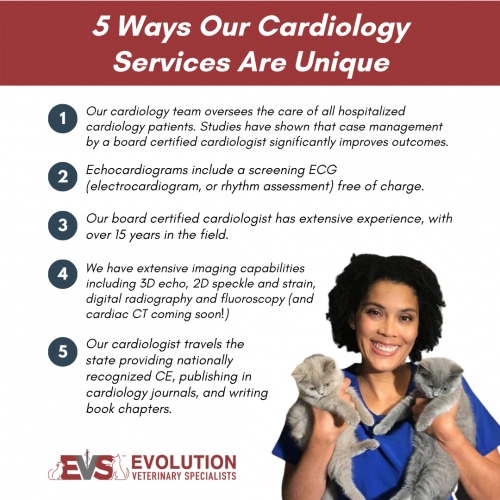How to Tell if Your Pet Needs an Ultrasound For Dogs}
Wiki Article
The Duty of Ultrasound and CT Scan in Modern Vet Practices: Insights From Experienced Professionals
In modern-day vet methods, ultrasound and CT scans substantially improve diagnostic capabilities. These imaging strategies supply critical understandings into animal wellness, leading treatment choices. Experienced specialists identify the unique benefits of each method. Ultrasound uses real-time evaluations, while CT checks deliver elaborate physiological details. Understanding their applications and roles raises essential concerns about their effect on individual end results and the future of vet diagnostics. What understandings can be obtained from their integrated usage?Comprehending Ultrasound in Vet Medicine
Ultrasound is a necessary diagnostic tool in vet medication, using a non-invasive technique to envision interior structures. This imaging method uses high-frequency acoustic waves to produce real-time pictures of cells and body organs, allowing veterinarians to examine conditions without surgical intervention. Usual applications include evaluating the heart, liver, kidneys, and reproductive body organs, along with monitoring pregnancies.The procedure is reasonably fast and can be executed in various setups, making it an obtainable alternative for vets. Unlike radiography, ultrasound supplies thorough information concerning soft cells and blood circulation, which is crucial for accurate diagnoses.Veterinary experts count on ultrasound to identify abnormalities such as growths, cysts, and fluid build-up. Its capability to direct biopsies and various other procedures even more improves its utility in medical method. By providing a efficient and safe way to take a look at inner composition, ultrasound has come to be a cornerstone of contemporary vet diagnostics.
The Benefits of CT Scans for Pet Diagnostics
CT checks deal substantial advantages in veterinary diagnostics by giving boosted precision in determining inner conditions (CT Scans For Animals). As a non-invasive imaging strategy, they assure the security and convenience of pets during examinations. In addition, CT scans assist in a complete analysis of interior structures, enabling for much more reliable treatment planningEnhanced Analysis Accuracy
Improvements in imaging innovation have actually substantially boosted analysis precision in veterinary medicine, specifically with making use of CT scans. These scans supply comprehensive cross-sectional pictures of an animal's interior structures, allowing veterinarians to determine problems with precision. The high resolution and three-dimensional abilities of CT imaging help with the detection of problems such as tumors, fractures, and internal blood loss that could be missed with typical imaging techniques. In addition, CT scans can help in pre-surgical preparation by supplying a thorough sight of physiological relationships. This degree of information not just enhances the accuracy of medical diagnoses but additionally help in tailoring efficient therapy strategies. The combination of CT technology into veterinary methods is transforming the landscape of pet medical care, boosting results for patients.Non-Invasive Imaging Strategy
The introduction of non-invasive imaging techniques has reinvented pet diagnostics, with CT scans emerging as a famous tool in vet practices. These scans supply high-resolution, cross-sectional photos of an animal's interior frameworks, enabling veterinarians to evaluate complicated problems without the need for intrusive treatments. The benefits of CT scans include their capacity to detect lumps, cracks, and internal bleeding with amazing precision. In addition, they assist in the analysis of soft cells and organs, improving analysis capabilities. The speed of CT scanning allows quick decision-making, which is essential in emergency situation situations. By decreasing stress and anxiety and pain for the pet, CT scans add to an extra gentle strategy to diagnostics, ultimately boosting treatment outcomes and progressing vet treatment.Comprehensive Internal Analysis
A thorough interior assessment is necessary for accurate medical diagnosis and effective treatment in veterinary medicine. CT scans deal substantial advantages in this respect, supplying thorough cross-sectional pictures of an animal's internal frameworks. This innovative imaging modality boosts visualization of complex anatomical regions, allowing veterinarians to recognize abnormalities such as tumors, cracks, and interior blood loss with higher precision. On top of that, CT checks help with the evaluation of conditions that might be testing to diagnose with conventional techniques. The rate and accuracy of CT imaging additionally add to prompt treatments, improving individual results. As vet methods progressively integrate CT innovation, the advantages of substantial internal assessments end up being evident, strengthening the relevance of this device in contemporary veterinary diagnostics.Comparing Ultrasound and CT Imaging Techniques
While both ultrasound and CT imaging serve important duties in veterinary diagnostics, each method uses distinctive benefits and constraints that can affect medical decision-making. Ultrasound is particularly valued for its real-time imaging capabilities, permitting vets to observe dynamic physical procedures. This strategy is non-invasive, mobile, and does not include ionizing radiation, making it a much safer option for both medical professionals and pets. Nonetheless, ultrasound may have constraints in imagining specific physiological structures or deep tissues.Conversely, CT imaging provides detailed cross-sectional views of the body, permitting exact localization of abnormalities. It masters assessing complicated organs and structures, especially in the thorax and abdomen. CT scans need sedation or anesthetic in several instances and involve exposure to ionizing radiation. Ultimately, the option between ultrasound and CT depends upon the specific professional situation, the area of interest, and the necessity of the diagnostic useful reference needs.Situation Researches: Effective Diagnoses With Imaging
Study illustrate the significant improvements in analysis accuracy achieved with sophisticated imaging innovations like ultrasound and CT scans in veterinary techniques. These innovations not just boost the detection of various problems but additionally assist in timely and efficient therapy plans. Examining details situations can highlight the transformative influence of these imaging methods on vet medication.Diagnostic Precision Improvements

Imaging Modern Technology Advancements
As veterinary imaging modern technology continues to evolve, its influence on diagnostic capacities ends up being progressively obvious. Recent study highlight the successful application of innovative ultrasound and CT check strategies in determining intricate problems. A vet facility utilized high-resolution CT scans to identify an unusual form of lung cancer in a dog, which traditional imaging had missed. In a similar way, an ultrasound evaluation exposed an abdominal mass in a cat, triggering prompt medical treatment and a positive result. These innovations not just boost diagnostic accuracy yet additionally make it possible for vets to create targeted treatment strategies. By leveraging sophisticated imaging innovations, vet experts are markedly boosting individual treatment, causing extra effective management of different health problems in animals.
The Duty of Imaging in Emergency Vet Care
Imaging plays a crucial function in emergency veterinary treatment, giving vets with essential information required to make fast, educated decisions. In immediate situations, strategies like ultrasound and CT scans enable experts to swiftly assess a pet dog's internal structures, recognizing important problems such as interior blood loss, cracks, or body organ abnormalities. These imaging techniques permit for real-time assessments, assisting in timely treatments that can be life-saving. As an example, ultrasound is vital for evaluating soft tissue injuries and problems like fluid accumulation, while CT checks deal thorough pictures of complex physiological structures, important for diagnosing trauma situations. The speed and precision of these imaging techniques boost the vet's capability to devise reliable therapy strategies, making sure the most effective feasible outcomes for their people. The assimilation of sophisticated imaging innovations right into emergency veterinary techniques is not only advantageous however progressively essential, as it improves analysis abilities and enhances total animal treatment throughout important moments.
Training and Proficiency in Veterinary Imaging
Although sophisticated imaging techniques such as ultrasound and CT scans are vital for effective vet treatment, the successful application of these innovations heavily depends upon the training and know-how of veterinary professionals. Competent usage of imaging tools requires comprehensive understanding of anatomy, pathology, and the principles underlying each technique. Vet professionals need to undergo customized training to precisely interpret imaging outcomes, which is crucial for diagnosing problems and planning treatment.Certifications and continuing education in veterinary imaging boost the abilities of practitioners, enabling them to remain updated with technical advancements. Cooperation between radiologists and vets typically brings about enhanced diagnostic precision, as professionals can supply insights right into complex situations. Additionally, sensible experience in managing imaging tools fosters self-confidence in its application. Ultimately, the quality of veterinary imaging solutions is straight associated to the level of training and knowledge had by the professionals using these crucial analysis tools.Future Patterns in Diagnostic Imaging for Animals
With the quick improvements in technology, vet analysis imaging is poised for considerable development in the coming years. Emerging fads suggest a change towards even more portable and accessible imaging methods, such as handheld ultrasound devices, which can improve field diagnostics. Furthermore, the integration of expert system is anticipated to reinvent image analysis, permitting quicker and much more accurate interpretations find more info of results.Moreover, developments in 3D imaging strategies and computed tomography will certainly offer vets with more detailed sights of animal makeup, leading to improved therapy strategies. Digital truth technology might additionally play a role in surgical planning and education, offering veterinarians an one-of-a-kind perspective on complicated cases.As telemedicine proceeds to expand, remote appointments promoted by analysis imaging will certainly become a lot more usual, permitting specialists to aid general practitioners in real-time. On the whole, these patterns are readied to improve the efficiency and effectiveness of vet care, inevitably enhancing animal outcomes.Often Asked Questions
Just How Much Do Ultrasound and CT Checks Expense in Veterinary Clinics?
The prices of ultrasound and CT scans in vet centers generally vary from $300 to $1,500, depending on elements such as location, center type, and certain treatments required for the pet's medical diagnosis and treatment.
Exist Any Type Of Threats Related To Ultrasound and CT Checks for Pets?
Ultrasound and CT scans usually present minimal risks to family pets. Potential issues include sedation reactions and direct exposure to anesthetics. Veterinarians meticulously evaluate each case to minimize any risks linked with these diagnostic proceduresThe Length Of Time Do Ultrasound and CT Procedures Typically Take?
Ultrasound treatments generally take about 30 minutes to an hour, depending upon the intricacy. CT scans, being even more detailed, generally call for thirty minutes to 90 mins, including preparation and healing time for the animal.Can All Veterinarians Perform Ultrasounds and CT Scans?
Not all veterinarians can execute ultrasounds and CT scans. Specialized training and qualification are commonly needed to ensure proficiency in these sophisticated imaging strategies, which might limit their schedule to vets with added credentials and sources.What Sorts Of Animals Profit The Majority Of From These Imaging Techniques?
Particular animal types, specifically pets and pet cats, benefit substantially from ultrasound and CT scans. These imaging methods improve diagnostic accuracy for problems like growths, interior injuries, and organ irregularities, bring about improved therapy results and client treatment. The high resolution and three-dimensional capabilities of CT imaging help with the discovery of conditions such as tumors, fractures, and internal bleeding that might be missed with conventional imaging methods. Case researches show the substantial renovations in diagnostic accuracy attained with sophisticated imaging technologies like ultrasound and CT scans in veterinary practices. Improving diagnostic accuracy in veterinary techniques has actually been significantly aided by improvements in imaging technologies such as ultrasound and CT scans. Advanced imaging techniques such as ultrasound and CT scans are crucial for efficient veterinary care, the successful implementation of these technologies greatly depends on the training and competence of veterinary professionals. Veterinary professionals should undergo customized training to precisely translate imaging outcomes, which is essential for diagnosing problems and planning treatment.Certifications and continuing education and learning in vet imaging enhance the skills of professionals, enabling them to remain Visit This Link updated with technical improvements.Report this wiki page